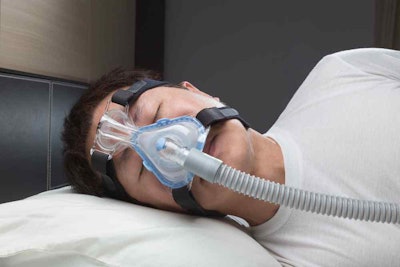
Trucking news and briefs for Thursday, Jan. 14, 2021:
Researchers find nearly half of truckers may have sleep apnea
A 2020 study looking at the prevalence of obstructive sleep apnea (OSA) in truck drivers found that nearly half of the 20,000 observed truck drivers potentially had apnea.
The study, conducted by the Virginia Tech Transportation Institute, used the so-called “STOP-Bang” sleep apnea screening tool, which assesses a person’s snoring, tiredness, observed apneas, hypertension, body mass index (BMI), age, neck circumference and gender to determine their risk factor for sleep apnea.
Researchers analyzed data collected from a previous study of just over 20,000 truck drivers, along with medical data from these drivers’ medical exams. In the initial study, only 6.4% of the drivers were marked as potentially having OSA, while 86% were marked as having “No OSA.” The remaining drivers had already been diagnosed with OSA.
Applying the STOP-Bang assessment identified 8,503 drivers from that pool as “OSA Potential” who were formerly “No OSA” or identified as not having enough data to make an OSA determination. These drivers, combined with the 879 drivers already included in the “OSA Potential” group, totaled 9,382 drivers potentially having obstructive sleep apnea, or 46.9% of the total driver pool in the study. These drivers would then require a sleep study to determine an OSA diagnosis.
According to the study, 48.19% of surveyed drivers had no sleep apnea after applying the STOP-Bang assessment, while 3.6% had diagnosed and treated OSA.
VTTI researchers say the efficacy of the STOP-Bang assessment in screening truck drivers for OSA should be further evaluated.
“Screening CMV drivers with the [STOP-Bang] and then conducting a polysomnography test for an OSA diagnosis would determine how well the SB is able to screen CMV drivers for OSA,” the study concludes. “However, it is clear that the SB provides a better screening evaluation for CMV drivers undergoing a [medical exam] than the current guidance given to medical examiners (i.e., no guidance on how to screen for OSA other than one question) in referring drivers for a polysomnography test.”
Under current regulations, there are no requirements for truck drivers to be tested for obstructive sleep apnea, apart from one question on medical exams as to whether a driver has any “sleep disorders, pauses in breathing while asleep, daytime sleepiness or loud snoring.” Researchers say, however, that this relies on drivers being open and honest when answering the question.
A previous rulemaking that would have required sleep apnea screening for truck drivers, which was proposed in 2016 under the Obama administration, was withdrawn in 2017 under the Trump administration. As reported earlier this week, sleep apnea screening could be back on the table in 2021 with a new administration.
FMCSA looks to amend vision standard for drivers to replace current exemption program
The Federal Motor Carrier Safety Administration is proposing to amend its regulations to allow drivers who cannot meet either the current distant visual acuity or field of vision standard, or both, in one eye to be physically qualified to operate a commercial vehicle.
Currently, these drivers are prohibited from operating in interstate commerce without an exemption from FMCSA.
The agency is proposing an alternate vision standard for physical qualification that, if adopted, would replace the current vision exemption program as a basis for determining physical qualification for these drivers.
Under FMCSA’s proposal, drivers who qualify under the proposed alternative vision standard would be required to complete a carrier-administered road test before driving in interstate commerce. The agency says the proposal “would eliminate the need for the current federal vision exemption program, as well as the grandfather provision in 49 CFR 391.64 for drivers operating under the previously administered vision waiver study program.
The proposed alternative vision standard is based on recommendations from FMCSA’s Medical Review Board and is similar to the regulatory framework for drivers with insulin-treated diabetes mellitus, the agency notes. The proposal would provide that, to be physically qualified under the alternative vision standard, the driver must:
- Have in the better eye distant visual acuity of at least 20/40, with or without corrective lenses, and field of vision of at least 70 degrees in the horizontal meridian
- Be able to recognize the colors of traffic signals and devices showing standard red, green and amber
- Have a stable vision deficiency
- Have had sufficient time to adapt to and compensate for the change in vision
FMCSA says there are currently 2,566 vision exemption holders who would no longer require an exemption if the proposed rule is made final.
“Accordingly, these drivers would be relieved of the time and paperwork burden associated with applying for or renewing an exemption,” FMCSA says.
The agency is requesting public feedback on the proposal, which can be made here through March 15.












